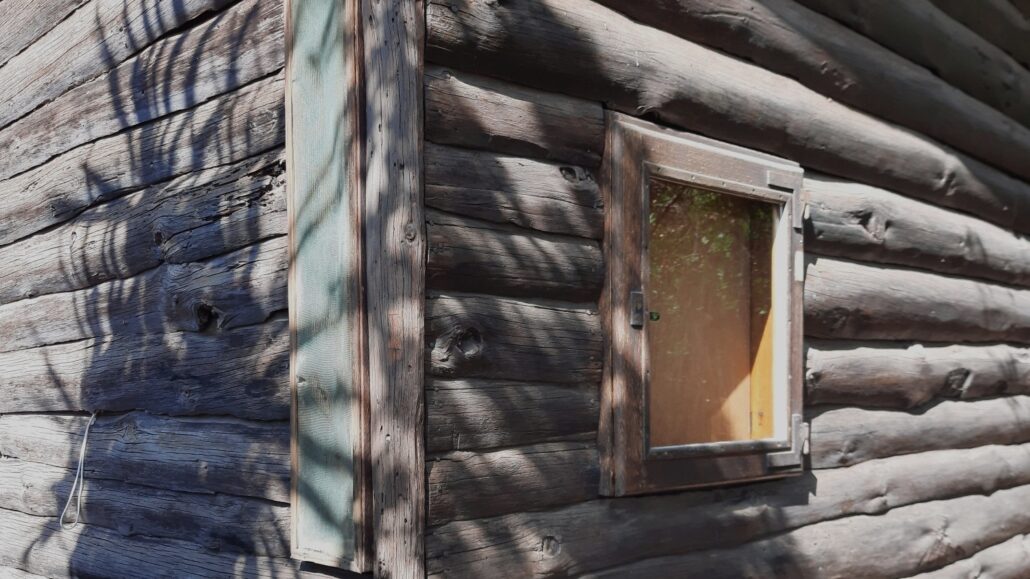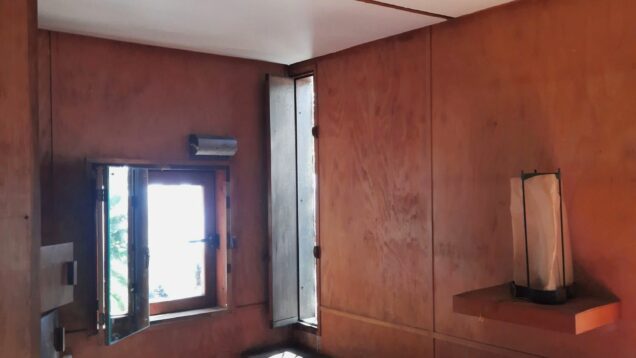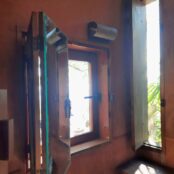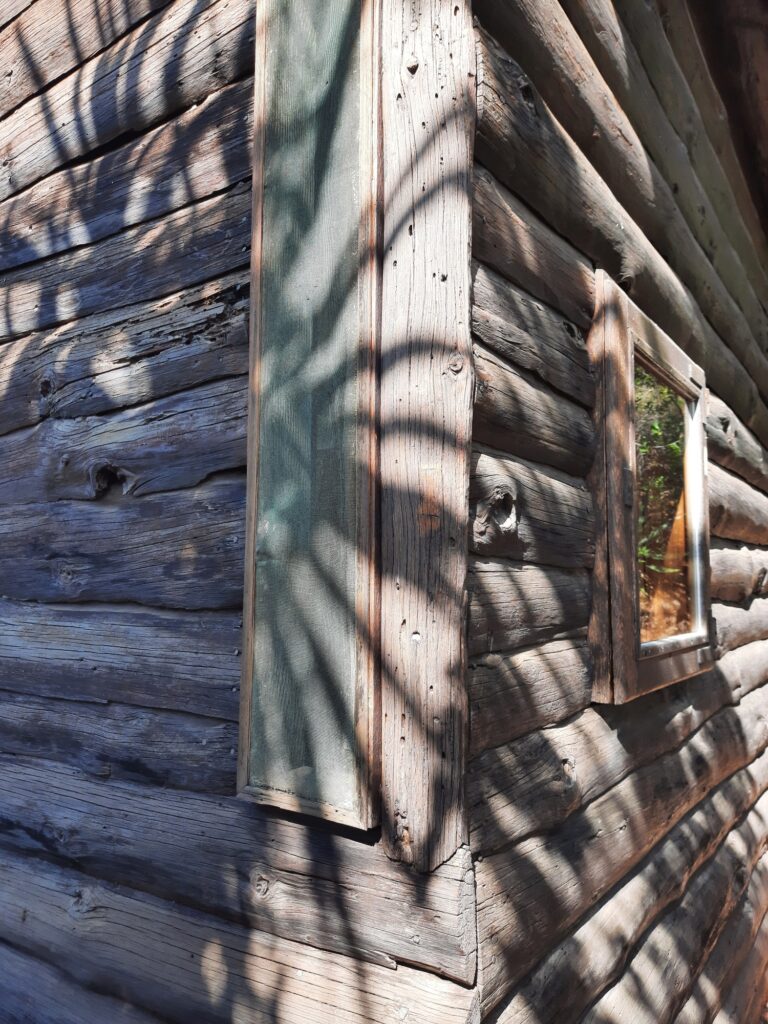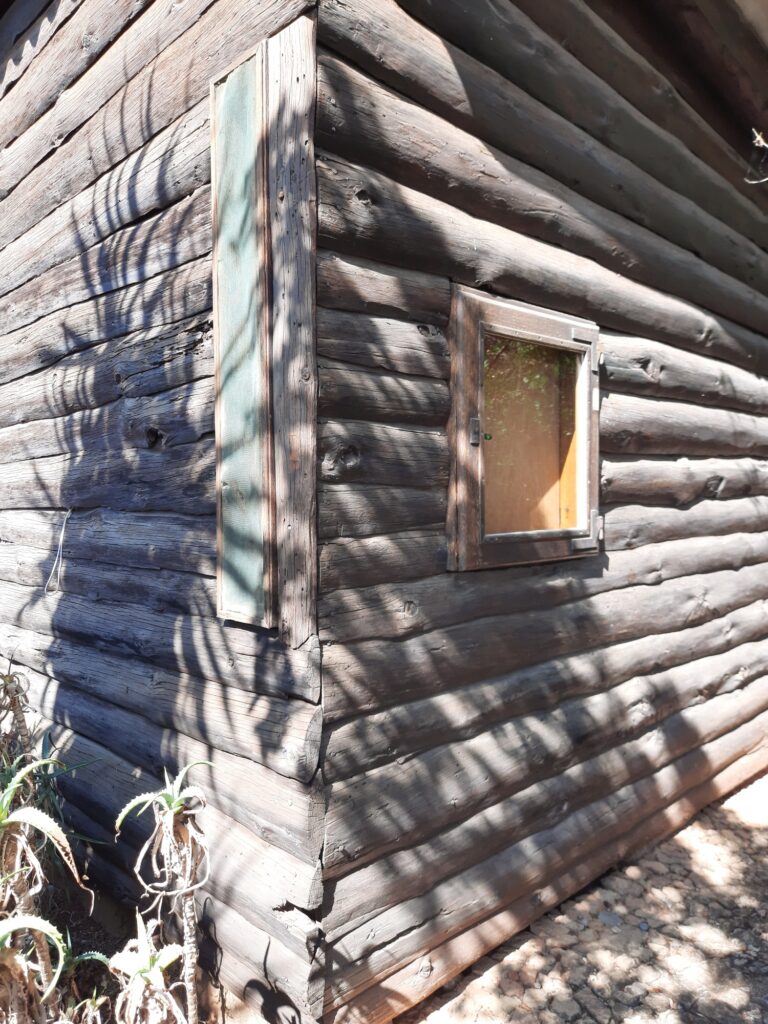Mosquito nets reduce natural lighting, transparency and ventilation, and thicken the window frames. But we need them, like many other things that spoil design, but that people find to be of importance. Here are two stories on the matter.
Text, photo: Ștefan Ghenciulescu
The first is about the splendid but barely livable Farnsworth house by Mies van der Rohe. Over the psychological unsafety and the total lack of thermoresistance, it’s also located next to a river, in a marshy and floodable area: the party place for mosquitoes. Apparently, Mrs. Edith Farnsworth, who also sued Mies over architectural and budget issues, had enlisted the help of a one of his former students and collaborators, Wiliam E. Dunlap, who designed bronze framed mosquito nets around her porch.1
Photographs of this and other changes that altered the purity but humanized the house have survived. Peter Palumbo, who bought the house and restored it, installed air conditioning and removed the screens.2 Today, as a tourist in summer, mosquitoes eat you whole.
The same year house Farsworth was being built (1951), on the coast of the Mediteranean, Le Corbusier was just finishing Le Cabanon, a low-budget but iconic project bearing an entire architectural philosophy; an exercise of modest means and materials.3
The house is lit and ventilated through two square windows complemented by more discrete means: one horizontal and two vertical slits disposed diagonally. The vertical slits have mosquito nets, but no windows. Most probably, when the cabin would be lived in, they would permanently stay open, allowing for cross ventilation. It must be stated that, beyond the climatic intelligence, the architectural effect of the texture is extraordinary. On the inside it overlaps with the sights deep in the distance or immediately close-by and tames the Mediterranean light. On the outside, the green slit reinvents the corner window of classical modernism and becomes a pittoresque element entering an intentionally tensed relationship with the rawness of the logs.
The opposition is apparent, but my intention is not to pass moral judgement. Nevertheless, in this case, the client was the architect himself and Le Corbusier imposed awful sacrifices on his own clients. However, this gesture – made again for the holiday homes close to the cabin – confirms that one can distill architecture from minimal ressources. Of course, it helps to be Corbu, but this does not prevent us from trying it ourselves. The mosquitoes continue to be a not only a nuisance, but a terrible source of disease and death.
Maybe, just like in modernist times, we could answer this and other colossal needs not just through equipment, but through architecture.
1 Jackie Craven, “Mies van der Rohe Gets Sued. The troubled story of the glass-walled Farnsworth house”, Thought.co, 2019
2 Nora Wendl, “Uncompromising Reasons for Going West: A Story of Sex and Real Estate, Reconsidered”, in Thresholds 43: “Scandalous”, quoted by Amelia Taylor-Hochberg, on archinect.com,
3 Cabanon de Le Corbusier, 1951

